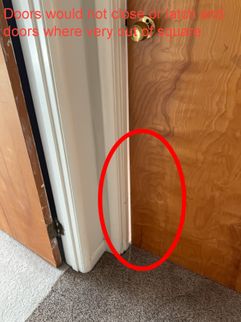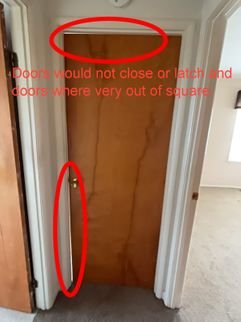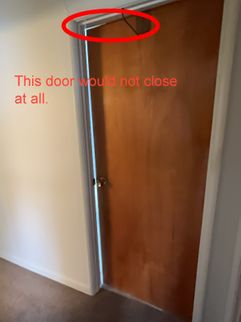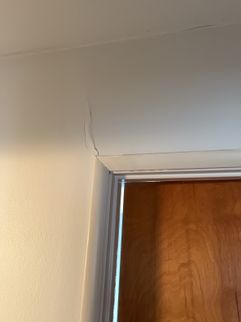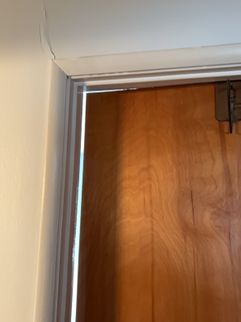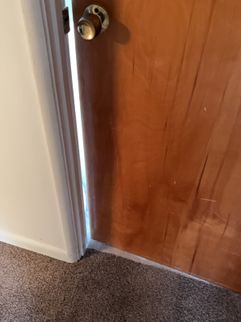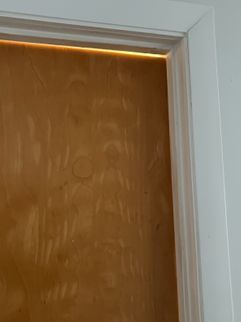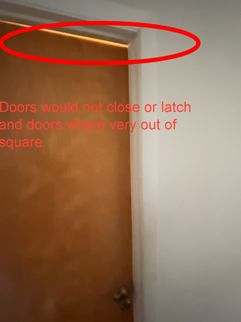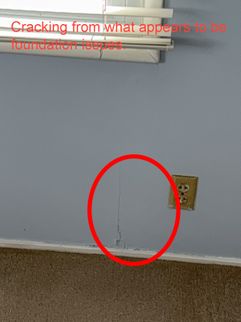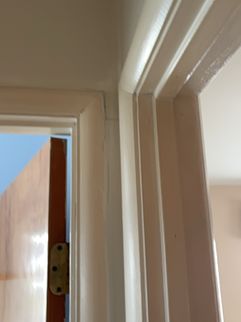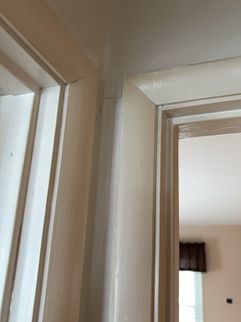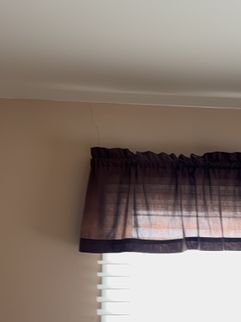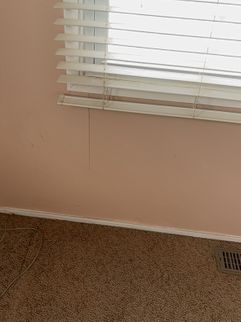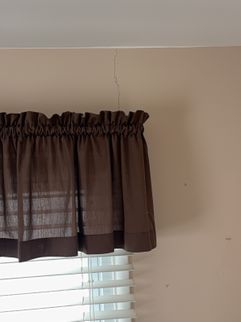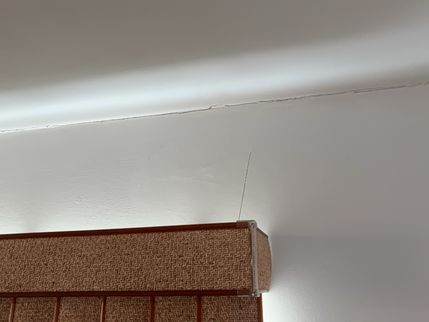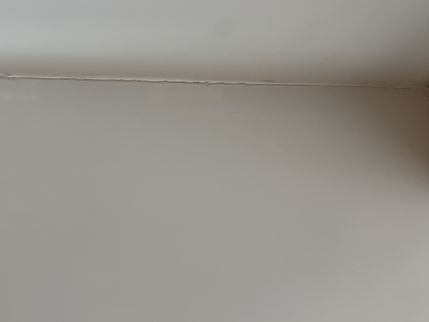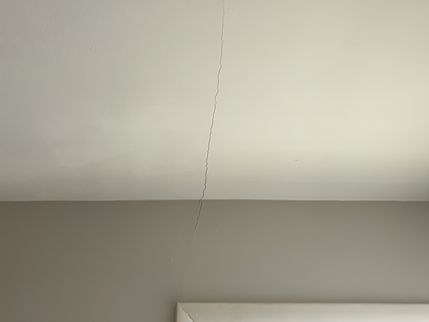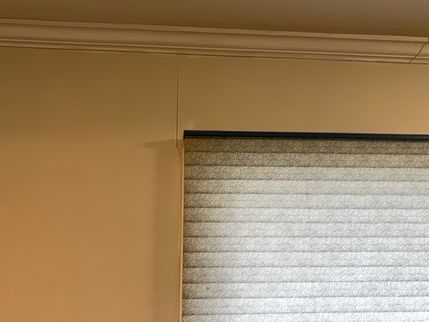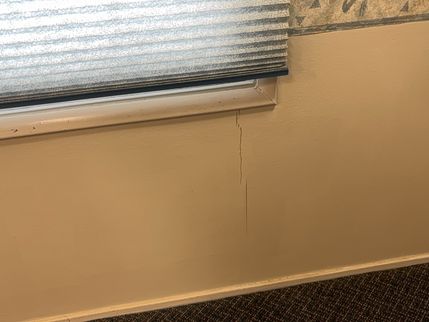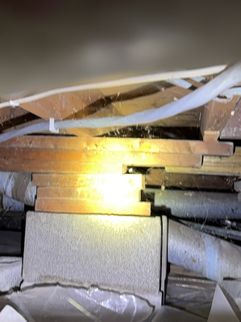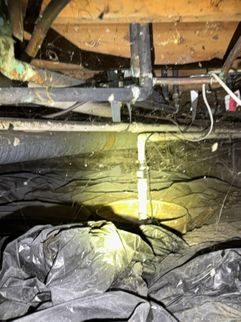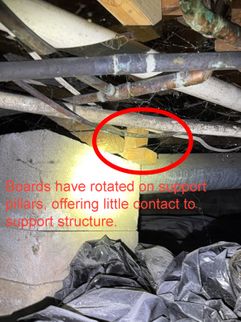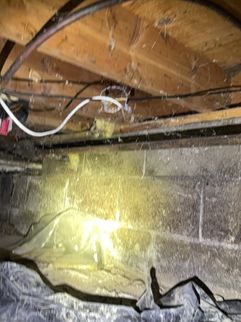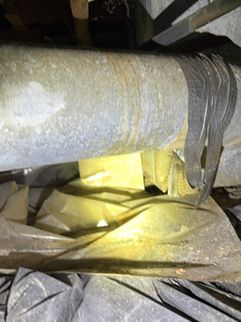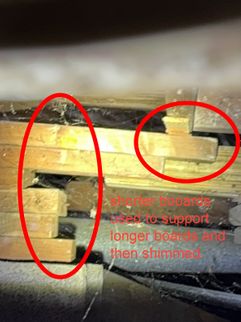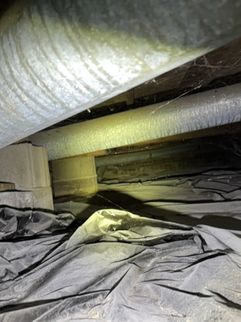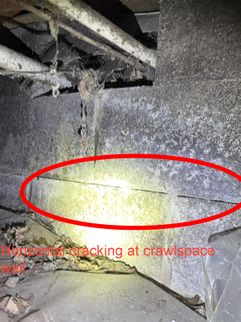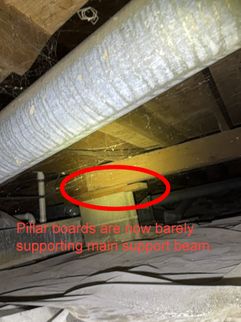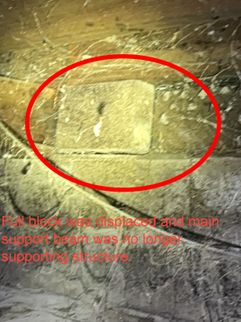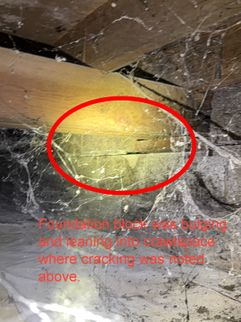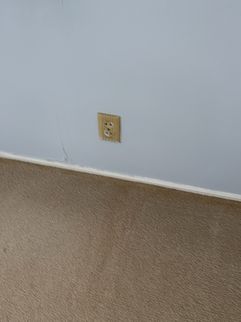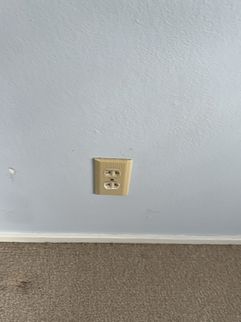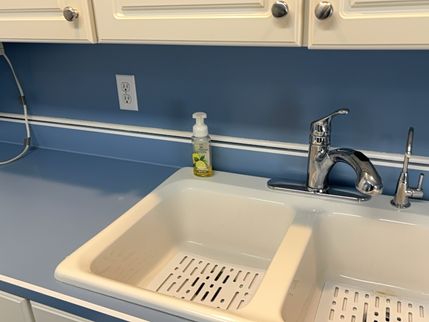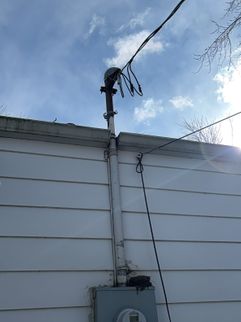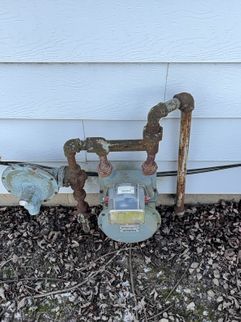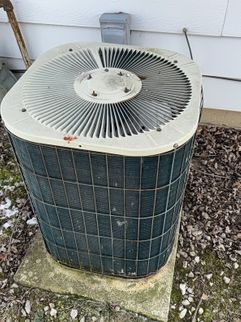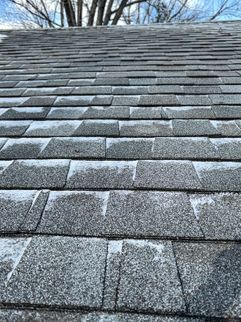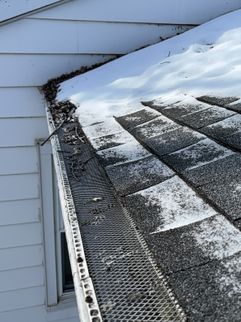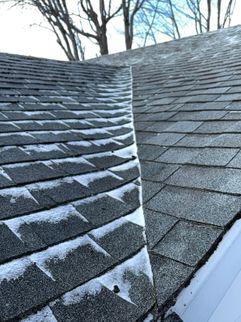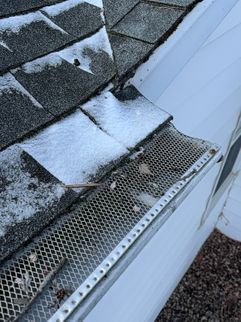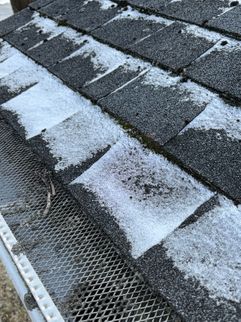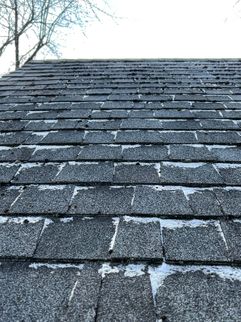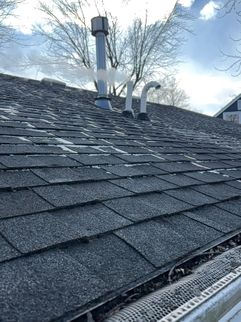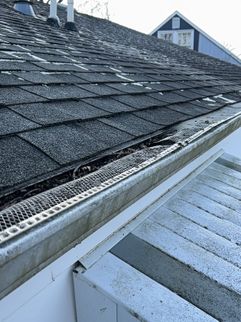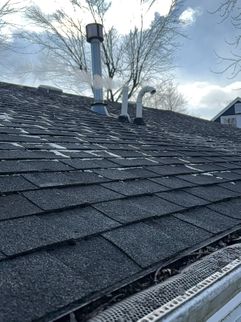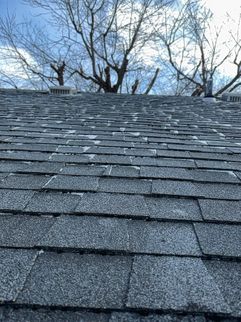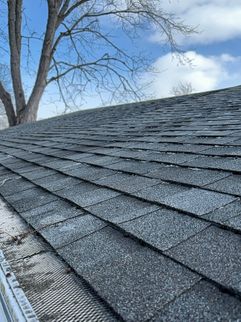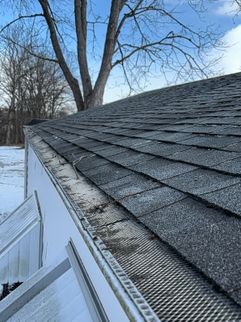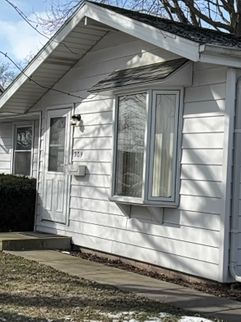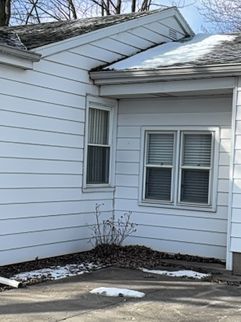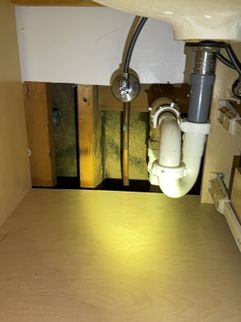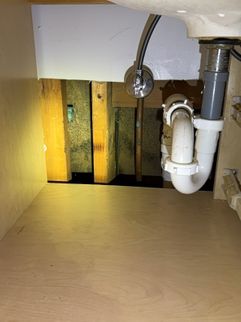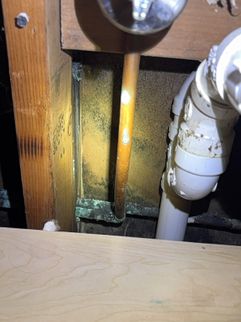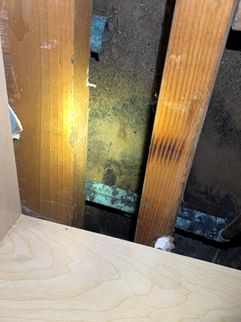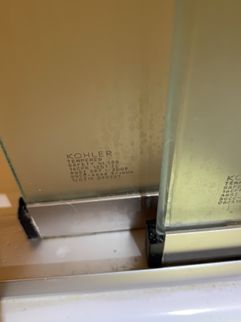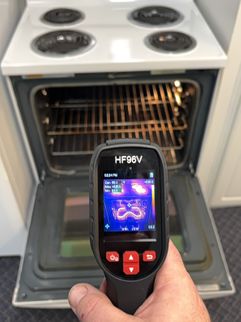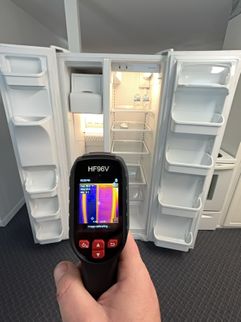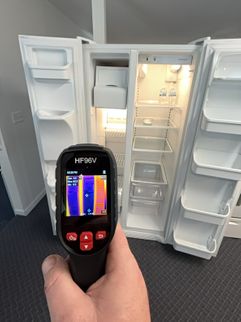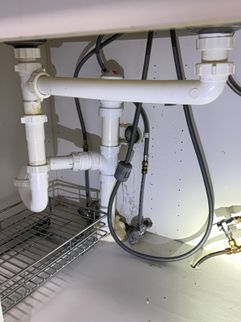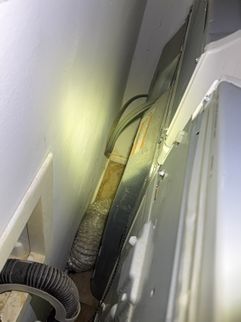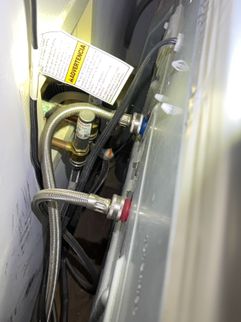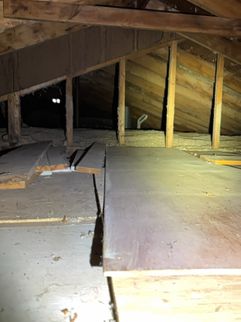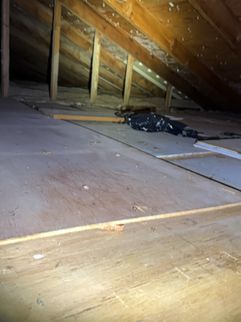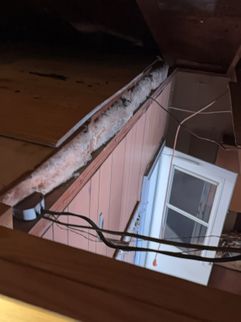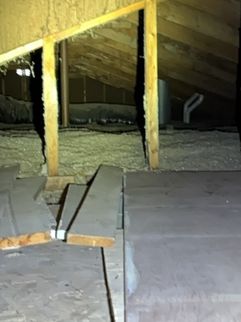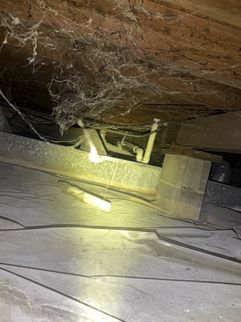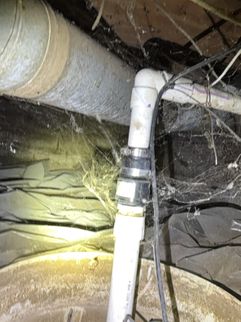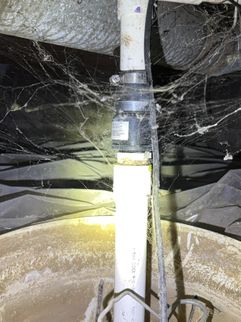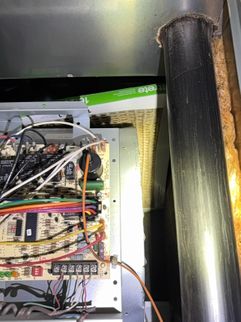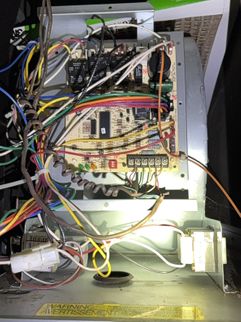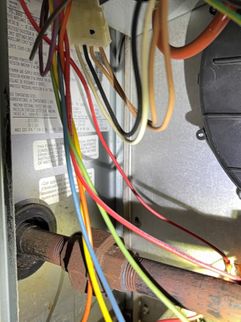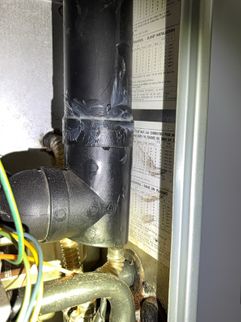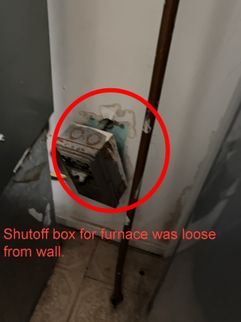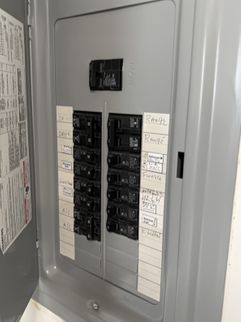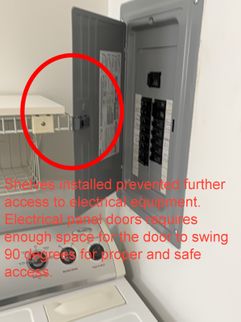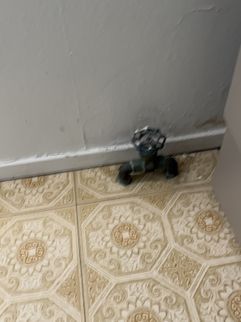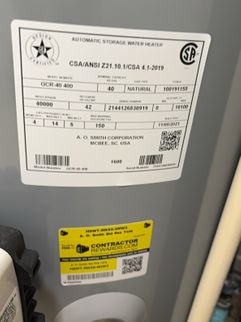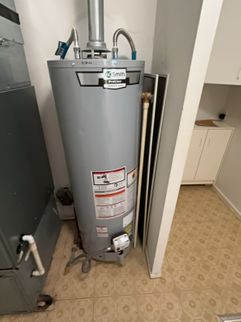The Scope and Purpose of a Home Inspection
Purchasing property involves risk
The purpose of a home inspection is to help reduce the risk associated with the purchase of a structure by providing a professional opinion about the overall condition of the structure. A home inspection is a limited visual inspection and it cannot eliminate this risk. Some homes present more risks than others. We cannot control this, but we try to help educate you about what we don’t know during the inspection process. This is more difficult to convey in a report and one of many reasons why we recommend that you attend the inspection.
A home inspection is not an insurance policy
This report does not substitute for or serve as a warranty or guarantee of any kind. Home warranties can be purchased separately from insuring firms that provide this service.
A home inspection is visual and not destructive
The descriptions and observations in this report are based on a visual inspection of the structure. We inspect the aspects of the structure that can be viewed without dismantling, damaging or disfiguring the structure and without moving furniture and interior furnishings. Areas that are concealed, hidden or inaccessible to view are not covered by this inspection. Some systems cannot be tested during this inspection as testing risks damaging the building. For example, overflow drains on bathtubs are generally not tested because if they were found to be leaking they could damage the finishes below. Our procedures involve non-invasive investigation and non-destructive testing which will limit the scope of the inspection.
This is not an inspection for code compliance
This inspection and report are not intended for city / local code compliance. During the construction process structures are inspected for code compliance by municipal inspectors. Framing is open at this time and conditions can be fully viewed. Framing is not open during inspections of finished homes, and this limits the inspection. All houses fall out of code compliance shortly after they are built, as the codes continually change. National codes are augmented at least every three years for all of the varying disciplines. Municipalities can choose to adopt and phase in sections of the codes on their own timetables. There are generally no requirements to bring older homes into compliance unless substantial renovation is being done.
This is just our opinion
Construction techniques and standards vary. There is no one way to build a house or install a system in a house. The observations in this report are the opinions of the home inspector. Other inspectors and contractors are likely to have some differing opinions. You are welcome to seek opinions from other professionals.
The scope of this inspection
This inspection will include the following systems: exterior, roof, structure, drainage, foundation, attic, interior, plumbing, electrical and heating. The evaluation will be based on limited observations that are primarily visual and non-invasive. This inspection and report are not intended to be technically exhaustive.
Your expectations
The overall goal of a home inspection is to help ensure that your expectations are appropriate with the house you are proposing to buy. To this end we assist with discovery by showing and documenting observations during the home inspection. This should not be mistaken for a technically exhaustive inspection designed to uncover every defect with a building. Such inspections are available but they are generally cost-prohibitive to most homebuyers.
Your participation is requested
Your presence is requested during this inspection. A written report will not substitute for all the possible information that can be conveyed verbally by a shared visual observation of the conditions of the property.
How to Read This Report
Getting the Information to You
This report is designed to deliver important and technical information in a way that is easy for anyone to access and understand. If you are in a hurry, you can take a quick look at our "Summary Page” and quickly get critical information for important decision making. However, we strongly recommend that you take the time to read the full Report, which includes digital photographs, captions, diagrams, descriptions, videos and hot links to additional information.
The best way to get the layers of information that are presented in this report is to read your report online (the HTML version), which will allow you to expand your learning about your house. You will notice some words or series of words highlighted in blue and underlined – clicking on these will provide you with a link to additional information. The HTML version of this report also contains streaming videos. Short video clips often contain important information and critical context and sounds that can be difficult to capture in words and still pictures.
For the most reliable viewing experience, I recommend viewing the report on as large a screen as practical, as much detail can be lost on small devices like smart phones. For similar reasons, reports should only be printed in color to retain as much detail as possible and minimize misinterpretation of photographs.
This report can also be printed on paper or to a PDF document.
Chapters and Sections
This report is divided into chapters that parcel the home into logical inspection components. Each chapter is broken into sections that relate to a specific system or component of the home. You can navigate between chapters with the click of a button on the left side margin.
Most sections will contain some descriptive information done in black font. Observation narrative, done in colored boxes, will be included if a system or component is found to be significantly deficient in some way or if we wish to provide helpful additional information about the system or the scope of our inspection. If a system or component of the home was deemed to be in satisfactory or serviceable condition, there may be no narrative observation comments in that section and it may simply say “tested,” or “inspected.”
Observation Labels
All narrative observations are colored, numbered and labeled to help you find, refer to, and understand the severity of the observation. Observation colors and labels used in this report are:
- Significantly Deficient:"Significantly deficient" means that in my opinion the condition is unsafe, not functional, and or it is significantly different from normal standards of practice. For all issues that are significantly deficient I strongly recommend having qualified contractors specify steps and costs to remedy the conditions. Note, there are often multiple options that impact the intrusiveness, cost, and schedule for repairs.
- Repair:Repair is used to designate anything that the inspector thinks should be repaired, replaced, or mitigated in some way. In the inspectors opinion these concerns should be addressed. These may have safety and functionality impacts. Impacts may develop or worsen in the future. There are risks associated with items that need repair or maintenance. Items might be worse than they looked at time of inspection as things change and as more information becomes available. The person purchasing the property should decide what to ask the current owner for. Please note, your inspectors opinion of who should repair which items may be offered as a courtesy and should not be considered as part of the inspection or part of the purpose and scope of the inspection.
- Near End of Service Life:We can not predict the future or accurately predict when things will fail. I will mark items as being near the end of service life if, in my opinion, the device is likely to be near the end of it's service life. Factors impacting this educated guess include but are not limited to: The average for how long this type of equipment usually lasts. The current age (best guess). Apparent condition of equipment, conditions onsite, and state of maintenance. I recommend budgeting for all eventual replacements. For all home owners I recommend monitoring components regularly so you can replace items before they fail as appropriate.
- Due Diligence:These are observations that may require further investigation. For example the inspection does not include identification of hazardous materials. I may point out a material or product that could be hazardous. To confirm if there is a hazard would require a specialist, samples taken, a lab, and permission from the current owner. All of those actions are outside of the scope of a standard inspection. Observations in this category are typically outside the scope of a standard inspection and should not be considered complete or material to the inspection. These observations should be considered unverified.
- Maintenance:These are items that should be considered part of normal or routine home ownership activities. Items such as servicing the furnace, cleaning the gutters, or changing filters. These items are not required to be reported as part of the standard inspection. There will be similar items that are not included, not noted, and not reported. Please read manuals and product documentation for all components of the home. Please follow all manufacturers recommendations and all local, county, and state rules. Observations in this category are typically outside the scope of a standard inspection and should not be considered complete or material to the inspection.
- Note:Refers to aside information and or any comments elaborating on descriptions of systems or limitations to the inspection. This can include general information This the information may not apply directly to the inspected property. This information is not directly part of the property inspection and should not be considered complete. Observations in this category are often outside the scope of a standard inspection and should not be considered complete or material to the inspection.
- Inspectors Notebook:These are notes and technical information that aid in the inspection process. I may leave such information in the report for reference purposes. These notes include technical information. These notes may have information from codes and other sources. Please note, this inspection is NOT a code inspection. It is NOT a compliance inspection. Please consult with the authority having jurisdiction for rules, laws, and local requirements. This report is the inspectors opinion and recommendations. Acting as a home inspector I do not represent the authority having jurisdiction. Acting as a home inspector I have no enforcement authority.
Pest Inspection
All items with the bug logo () are part of a structural pest inspection. If your inspector included a structural pest inspection as a part of the scope of your home inspection, you can distinguish pest inspection items by this logo. You can also go to the pest inspection summary page to see a summary of the items that are part of a pest inspection.
Summary Page
The Summary Page is designed as a bulleted overview of all the observations noted during inspection. This helpful overview is not a substitution for reading the entire inspection report. The entire report must be read to get a complete understanding of this inspection report as the Summary Page does not include photographs or photo captions.
Moisture Meter Testing
Where moisture meter testing is indicated in this report a Protimiter Survey Master Dual Function was used.
SUMMARY
Significantly Deficient
- I1-1 ◾Interiors:
Structural Concerns At Coverings
Issues were noted at the doors that were concerning and appeared to be consistent with structural movement. Uneven gaps and components in the home being out of level, plumb, or square can be caused by poor quality contractor work but it also can indicate structural issues. Diagnosing structural issues is outside the training and scope of a normal property inspection.
Indications Of Possible Structural Movement:
- Components were out of square.
- Components were out of plumb.
- Multiple components appeared to have moved in the same direction.
- Bulging.
- Diagonal cracking.
- Horizontal cracking. This can indicate potentially serious structural problems with the foundation. I recommend additional inspection of the foundation by a structural engineer or qualified general contractor. This is recommended for safety.
Contractors may want to take detailed measurements and monitor for further future movement to diagnose. For these types of issues it is possible that more than one contractor may be needed to diagnose. Other issues should be anticipated and these conditions can change seasonally. Photos provided are representative of the issues, not all inclusive. These types of issues can be difficult to diagnose. 💡
Recommendations:
- Qualified framing carpenter.
- Qualified foundation specialist.
- 💡When structural concerns are noted please use contractors who have access to a qualified structural engineer for consultation if needed.
- Qualified structural engineer.
I recommend repairing as deemed necessary by qualified contractors. This is recommended for safety and to prevent further structural movement.
- S1-1 ◾Structure:
Structural Concerns
Significant concerns were noted regarding the structure. The structure appeared to be damaged.
Foundation:
- Cracking.
- Cracking with displacement.
- Leaning.
- Old style post and pier.
Footings:
- Not visible - not inspected.
Cracking:
- Bulging.
- Bowing.
- Leaning.
- Horizontal cracking. This can indicate potentially serious structural problems with the foundation. I recommend additional inspection of the foundation by a structural engineer or qualified general contractor. This is recommended for safety.
- Large cracks - over 1/4 inch wide.
- Displacement visible - I recommend further evaluation by a qualified structural engineer.
- Cracking uplift and movement - I recommend further evaluation by a qualified structural engineer.
Beams:
- Improperly supported.
Posts / Columns:
- Not well attached. Requirements for post attachment have changed over time. The posts were not well attached. I recommend attaching them conforming to current standards as a repair or as an upgrade when other work is being done.
Photos provided are representative of the issues, not all inclusive. Other issues should be anticipated.
Recommendations:
- Qualified foundation specialist.
- Qualified framing carpenter.
- 💡When structural concerns are noted please use contractors who have access to a qualified structural engineer for consultation if needed.
- Qualified structural engineer.
I recommend repairing, monitoring or getting as much information as possible as deemed necessary by qualified contractors. This is recommended for safety and to prevent further structural movement.
Repairs
- EAUAE-1 ◾Equipment And Utilities At Exterior:
Outlets
Outlets (receptacles) were missing / not installed at typical locations.
💡Number of outlets and locations should be determined by a qualified electrician and as per your needs.
Recommendations:
- Qualified electrician.
I recommend installing outlets as needed. This is recommended for normal function and to meet your needs.
- I1-2 ◾Interiors:
Outlets 🛑 Safety Concern
Outlets were 2 prong (not tested and may not be grounded) and old or outdated, not up to current safety standards.
Issues Found:
- 2 prong outlets. These are outdated, not grounded, no longer recommended. 2 prong devices were not tested.
Exterior Receptacles (Outlets):
- No outlets found at exterior.
Note, Devices that are referred to as outlets are actually receptacles. For inspection reports I use the more common term (outlets). The electrical system is always an obstructed view during inspection. Issues noted are representative, not all inclusive. 💡
Recommendations:
- Qualified electrician.
I recommend repairing or replacing. This is recommended for normal function and for safety.
- I1-3 ◾Interiors:
(GFCI) Ground Fault Circuit Interrupters .....
GFCI (Ground Fault Circuit Interrupter) protection was missing near water sources.
Kitchen Receptacles (Outlets):
- GFCI protection not found. Increased shock risk.
For all properties it is a good idea to have an electrician confirm all exterior electrical is made to be outside, that you have receptacles (outlets) and lighting where you want and upgrades to in use weather resistant covers for all exterior electrical. Situations where GFCI protection may not be desirable (due to false trips) is due to medical equipment, flood / fire prevention, alarms and sensors, and food refrigeration. I recommend a qualified electrician to add GFCI, AFCI, and any other life saving features where it makes sense to do so. GFCI protection is recommended for safety near water sources and decreases the risk of electrical safety hazards. 💡For older properties it is common to have GFCI (Ground Fault Circuit Interrupter) issues. For an electrician it is usually not difficult to add or repair GFCI protection. I recommend devices that make a noise when they have detected a fault. In most situations GFCI increases safety.
Recommendations:
- Qualified electrician.
I recommend having ground fault circuit interrupters and similar protection added and replaced where it makes sense to do so for increased safety.
Near End of Service Life
- EAUAE-3 ◾Equipment And Utilities At Exterior:
Past Average Expected Life 🌲 Efficiency / IAQ
The average expected life of equipment is an estimate based on the kind of equipment and national averages. In reality equipment life is not predictable (the deviation from the average can be greater than expected). The estimate I use for air conditioning is 15 years, water heaters is 10 years and heating equipment is 20 years. This is my best guess for how long this type of equipment lasts.
Recommendations:
- For any older equipment I recommend budgeting for replacement.
- I recommend a qualified installer to check the condition of the equipment and perform any maintenance or servicing needed.
- I recommend replacing older equipment proactively or monitoring and preparing for replacement.
- S-3 ◾Systems:
Past Average Expected Life 🌲 Efficiency / IAQ
The average expected life of equipment is an estimate based on the kind of equipment and national averages. In reality equipment life is not predictable (the deviation from the average can be greater than expected). The estimate I use for water heaters is 10 years, air conditioning is 15 years and heating equipment is 20 years. This is my best guess for how long this type of equipment lasts.
Recommendations:
- For any older equipment I recommend budgeting for replacement.
- Sometimes it is better to replace equipment before it fails.
- Proactive replacement or upgrade can be beneficial to avoid emergencies and also for increased efficiency and increased safety.
- I recommend replacing older equipment proactively or monitoring and preparing for replacement.
- I recommend a qualified installer to check the condition of the equipment and perform any maintenance or servicing needed.
- I recommend a qualified installer to replace the equipment or provide a written assessment regarding the current condition of the equipment.
Due Diligence
- I-1 ◾Introduction:
Cooling Equipment - Too Cold To Test
Testing the cooling equipment when it is cold outside can damage the air conditioning equipment.
- The cooling system was not tested due to cold conditions at time of inspection.
Recommendations:
- I recommend asking current owners for documentation including maintenance records for all heating and cooling equipment.
- I recommend testing when conditions permit.
- I recommend a qualified heating and cooling specialist to clean and maintain the equipment.
- AI-1 ◾Additional Information:
Thank You! 📝 Note
Thank you for having me do this inspection for you. Please read the full report. Please contact me so we can go over the report. This is important to make sure issues have been communicated in the best possible way for your needs and to help you get the most out of your inspection.
Maintenance Items
- GAD-1 ◾Grounds And Drainage:
Crawlspace Vents
Vent Issues:
- No vent within 3 feet of corner. Can cause moisture issues.
- Proper ventilation of a crawl space helps prevent excess moisture and reduces pest activity.
- There may not be enough ventilation. I recommend at least 1 square foot per 150 square feet of crawl space area.
Recommendations:
- Qualified insulation, ventilation and air sealing specialist.
I recommend maintenance, repairing or upgrading. This is recommended to prevent structural issues and to prevent water damage.
- S-1 ◾Systems:
Forced Air Distinguishing Characteristics 📝 Note 🔍 Due Diligence 🌲 Efficiency / IAQ 👁🗨 Monitor
- Forced air heating systems use air flow via ducting to distribute heating.
- Forced air heating systems typically accommodate cooling systems as well with a shared distribution system.
Recommendations:
- I recommend asking the current owner for all documentation regarding the installation, maintenance, and repairs.
- I recommend cleaning per manufacturers recommendations.
- I recommend having unit cleaned if maintenance has not been done recently or can not be confirmed.
📚FULL REPORT
◾Grounds And Drainage
Surface Drainage
Walkways
Driveways
Patios
Retaining Walls
Crawlspace Vents And Wells
Window Wells
Egress / Basement Wells
Fencing
◾Introduction
Inspection Conditions
Contract Sent: Before Inspection
Contract Signed: Before Inspection
Property Type: Single Family (Detached)
Year of Construction (Estimated): Pre 1964 (1962)
Temperature (Fahrenheit, Estimated): Below 0°
Weather: Challenging (❄️Snow and Ice on the ground)
Cooling Equipment - Too Cold To Test
Testing the cooling equipment when it is cold outside can damage the air conditioning equipment.
- The cooling system was not tested due to cold conditions at time of inspection.
Recommendations:
- I recommend asking current owners for documentation including maintenance records for all heating and cooling equipment.
- I recommend testing when conditions permit.
- I recommend a qualified heating and cooling specialist to clean and maintain the equipment.
Asbestos Warning
Asbestos was commonly used in buildings until around 1986. The presence of asbestos should be assumed in properties prior to that time frame. Common products that may contain asbestos include "popcorn" coverings, textured coverings, acoustic tiles, linoleum, vinyl, siding, vermiculite, heat duct insulation / tape, pipe insulation and paints. Asbestos products are not usually considered to be a problem as long as they are in sound condition and not friable. When materials are damaged or when remodeling is performed, strict safety protocols should be followed to limit or prevent the spread of asbestos. There is no way to guarantee that any property is free of asbestos (even newer properties).
- I may or may not note materials of concern.
- Material identification is limited outside the scope of the inspection.
- Testing (not part of the inspection) is necessary if you want to confirm that any material does or does not contain asbestos.
- This comment and any comments regarding any hazardous material is provided as a courtesy and should be considered incomplete.
- The presence of asbestos can not be determined without lab testing.
- All comments regarding asbestos are outside the scope of the inspection.
- I do not have any hazardous materials certifications or credentials.
- If there is a forced air system and you are concerned about asbestos I strongly recommend professional duct cleaning, sanitizing, and chemical sealing from the inside. I recommend doing this coordinated with a professional commercial cleaning of the property and any forced air systems, equipment, and components.
- You should contact a hazardous materials specialist regarding any such concerns.
- For more information please see the following: https://www.asbestos.com/products/ and https://www.epa.gov/asbestos
Recommendations:
- For all properties I recommend maintaining coverings and paint.
- If you are concerned about hazardous materials please consult with a specialist for proper identification and mitigation options.
Sewer Main Warning
Underground plumbing waste lines prior to 1980 are likely to be a product other than PVC. Underground plumbing prior to 1980 (cast iron or clay) tend to require more maintenance and are more likely to need repairs. Underground plumbing is not visible at time of inspection. Underground plumbing could be working at time of inspection then issues become evident over time or with changes in usage.
Recommendations:
- I recommend asking current owner for any information available regarding past repairs and maintenance.
- A qualified plumber can perform a "sewer scope".
- A qualified plumber can use a camera to inspect the sewer lines or the drain waste vent system.
- 💡Note, you may need to get permission from the current owner for further evaluation of the plumbing system.
- Using a camera in the plumbing may require replacement of plumbing caps, removal of toilets and replacement of gaskets or wax rings.
- I advise getting owners permission before damaging any existing components (caps, gaskets or wax rings).
Weather Conditions Impact Inspections
Weather conditions at time of inspection always impact the inspection. Rain makes some defects visible that would not be visible without the rain. Rain can also limit the inspection of the exterior components. If it has been dry for a while conditions may prevent defects from being discovered. Challenging weather conditions were present at time of inspection. This may improve detection of some issues inside but challenging weather does limit, hamper, or can even prevent inspection of the exterior.
Recommendations:
- For all purchases, at final walk through, you should look closely at the property for any conditions that have changed or become visible since the inspection.
- If new conditions are discovered after inspection and before closing you should discuss these conditions with your attorney prior to closing.
- I recommend monitoring, regular maintenance, and normal repairs as needed.
◾Grounds And Drainage
Surface Drainage
Grading And Surface Drainage: Mostly Positive
Vegetation: Normal Conditions (Maintenance / Trimming Recommended)
Drainage Conditions And Systems: Not Visible Below Grade
Walkways
Walkways: Normal Conditions
Driveways
Driveways: Normal Conditions
Patios
Patios: None
Retaining Walls
Retaining Walls: None Found
Crawlspace Vents And Wells
Crawlspace Vent Covers: None Found (Obstructed View), Issues Noted
Crawlspace Vent Wells: No Crawlspace Vents Found
Crawlspace Vents
Vent Issues:
- No vent within 3 feet of corner. Can cause moisture issues.
- Proper ventilation of a crawl space helps prevent excess moisture and reduces pest activity.
- There may not be enough ventilation. I recommend at least 1 square foot per 150 square feet of crawl space area.
Recommendations:
- Qualified insulation, ventilation and air sealing specialist.
I recommend maintenance, repairing or upgrading. This is recommended to prevent structural issues and to prevent water damage.
Window Wells
Window Wells: No Windows Below Grade
Egress / Basement Wells
Egress / Basement Wells: None Found
Fencing
Fencing: Not Inspected
◾Equipment And Utilities At Exterior
Electrical
Equipment Outside: Normal Conditions Noted
Service (Drop / Lateral, Entrance Conductors, Cables, And Raceways): Normal Conditions Noted
Electrical Service Grounding: Overhead Service (Ground Rod Visible)
Electrical Outside: Outlets Missing Or Not Found
Outlets
Outlets (receptacles) were missing / not installed at typical locations.
💡Number of outlets and locations should be determined by a qualified electrician and as per your needs.
Recommendations:
- Qualified electrician.
I recommend installing outlets as needed. This is recommended for normal function and to meet your needs.
Plumbing
Equipment Outside: Normal Conditions Noted
Main Fuel Shut-Off Valve Locations: Outside (Back)
Exterior Plumbing: 1 Faucet (Not Tested Cold Weather)
Cooling
Equipment Outside: Normal Conditions Noted
Cooling Equipment: Too Cold To Test
Manufacturers: Bryant
Year Of Manufacture (Estimated): Unknown, Appeared To Be Past Expected Life
Cooling Capacity (Estimated): Unknown
Max Breaker: Not Visible, Nameplate Not Visible
Past Average Expected Life 🌲 Efficiency / IAQ
The average expected life of equipment is an estimate based on the kind of equipment and national averages. In reality equipment life is not predictable (the deviation from the average can be greater than expected). The estimate I use for air conditioning is 15 years, water heaters is 10 years and heating equipment is 20 years. This is my best guess for how long this type of equipment lasts.
Recommendations:
- For any older equipment I recommend budgeting for replacement.
- I recommend a qualified installer to check the condition of the equipment and perform any maintenance or servicing needed.
- I recommend replacing older equipment proactively or monitoring and preparing for replacement.
Heating
Heating Equipment Outside: Not Inspected (Not Applicable)
◾Exterior Structures
🛐Roof Coverings
Methods Used To Inspect Roof Coverings: Inspected From (Ladder), Walked (Part Of Roof)
Roof Covering Description: Asphalt
Roof Covering Condition: Normal Conditions (Sealant Maintenance Recommended)
Roof Drainage Systems: Gutters And Downspouts (Installed, Extensions Installed)
Flashings, Skylights, And Roof Penetrations: Normal Conditions Noted (Maintenance / Sealant Refresh Recommended, Plumbing Vent Visible), Obstructed View
Chimneys And Flues: Normal Conditions Noted (PVC, Flue - Metal At Top)
Eaves, Soffits, And Fascias: Normal Conditions (I Recommend Cleaning Vent Covers And Screens)
Wall Coverings
Description Of Exterior Wall Covering: Aluminum / Vinyl Siding
Exterior Wall Covering: Normal Conditions Noted (Maintenance Recommended - Caulk And Sealants)
Exterior Wall Flashing And Trim: Normal Conditions
Foundation Visible At Exterior: Limited View (Normal Conditions, Normal Cracking At Corners)
Penetrations: Normal Conditions (Maintenance Recommended, Caulk / Sealant Recommended)
Lapped Siding Description .....
Lapped vinyl or aluminum siding was installed. Lapped siding is a popular, cost effective, low maintenance option. Lapped siding is not as durable as other options. In general lapped siding is low cost to install and low cost to maintain. Lapped siding typically lasts around 20 to 40 years depending on several factors.
Decks And Balconies
Attached Decks And Balconies: None Found
Porches And Stoops
Attached Porches And Stoops: None
Stairs
Attached Steps And Stairs: None
Doors And Windows
Windows: Normal Conditions Noted
Exterior Door Lighting: Present Near Front Door
Doorbell: Not Inspected (Accessories)
Screen And Storm Doors: Not Inspected - Accessories (Opened Closed And Latched)
Outbuildings
Outbuildings: None Found
◾Garages
Attached Garage
Attached Garages: 1 Inspected
Overhead Doors: 1 Overhead Door, Automatic Overhead Doors (1)
Overhead Door Operations: Opened Closed With Beams Working
Exterior Doors: No Person Sized Exterior Door
Electrical: Outlets Found (1)
Garage Doors - To Living Space: Solid, Self Closer Noted (Working)
Heating And Plumbing: None Found
Windows: Same As Home
Coverings: Unfinished
Accessories: Not Inspected
Reference Photos
- Reference photos are provided as a courtesy.
Garage (Freestanding)
Detached Garages: None Found
◾Interiors
Rooms
Walls, Ceilings And Floors: Structural Concerns At Coverings
Interior Doors: Normal Conditions Noted, Structural Concerns At Coverings
Windows: Structural Concerns At Coverings, Opened Closed And Locked (Representative Number)
Electrical: Outlet Issues
Closets: No Lighting (No Issue. Just Letting You Know)
Accessories: Not Inspected
Structural Concerns At Coverings
Issues were noted at the doors that were concerning and appeared to be consistent with structural movement. Uneven gaps and components in the home being out of level, plumb, or square can be caused by poor quality contractor work but it also can indicate structural issues. Diagnosing structural issues is outside the training and scope of a normal property inspection.
Indications Of Possible Structural Movement:
- Components were out of square.
- Components were out of plumb.
- Multiple components appeared to have moved in the same direction.
- Bulging.
- Diagonal cracking.
- Horizontal cracking. This can indicate potentially serious structural problems with the foundation. I recommend additional inspection of the foundation by a structural engineer or qualified general contractor. This is recommended for safety.
Contractors may want to take detailed measurements and monitor for further future movement to diagnose. For these types of issues it is possible that more than one contractor may be needed to diagnose. Other issues should be anticipated and these conditions can change seasonally. Photos provided are representative of the issues, not all inclusive. These types of issues can be difficult to diagnose. 💡
Recommendations:
- Qualified framing carpenter.
- Qualified foundation specialist.
- 💡When structural concerns are noted please use contractors who have access to a qualified structural engineer for consultation if needed.
- Qualified structural engineer.
I recommend repairing as deemed necessary by qualified contractors. This is recommended for safety and to prevent further structural movement.
Outlets 🛑 Safety Concern
Outlets were 2 prong (not tested and may not be grounded) and old or outdated, not up to current safety standards.
Issues Found:
- 2 prong outlets. These are outdated, not grounded, no longer recommended. 2 prong devices were not tested.
Exterior Receptacles (Outlets):
- No outlets found at exterior.
Note, Devices that are referred to as outlets are actually receptacles. For inspection reports I use the more common term (outlets). The electrical system is always an obstructed view during inspection. Issues noted are representative, not all inclusive. 💡
Recommendations:
- Qualified electrician.
I recommend repairing or replacing. This is recommended for normal function and for safety.
Bathrooms
Bathrooms: 1, All Bathroom Fixtures Working, No Active Leaking
Toilets: Flushed (1 Working), No Active Leaking Found
Faucets / Sinks: Working, No Active Leaking (All Tested)
Showers / Bathtubs: Working, No Active Leaking (1 Shower)
Electrical: Outlet Near Water Tested And Reset
Bathroom Fans - Mechanical Ventilation: Working (At Full Bathroom)
Cabinets And Countertops: Normal Conditions Noted
Walls Ceilings And Floors: Normal Conditions Noted
Doors: Issues Noted In Other Sections
Windows: No Bathroom Window
Glass In Bathrooms: Temper Stamp Noted
Accessories (Not Inspected): Towel Bars Missing
Kitchen
Kitchens: 1, Inspected (1)
Plumbing: Working - No Active Leaking
Disposal: Not Found
Dishwasher: None Installed
Cabinets And Countertops: Normal Conditions Noted
Electrical: GFCI Issues
Cooktop / Oven: Cooktop And Oven
Refrigerator: Working (Measured Below 40 F), Freezer Working (Measured Below 0 F), Water Dispenser (Working)
Microwave: None Installed None Built-In
Walls Ceilings And Floors: Normal Conditions Noted
Doors / Windows: Windows (Opened Closed And Locked)
Accessories: Not Inspected
(GFCI) Ground Fault Circuit Interrupters .....
GFCI (Ground Fault Circuit Interrupter) protection was missing near water sources.
Kitchen Receptacles (Outlets):
- GFCI protection not found. Increased shock risk.
For all properties it is a good idea to have an electrician confirm all exterior electrical is made to be outside, that you have receptacles (outlets) and lighting where you want and upgrades to in use weather resistant covers for all exterior electrical. Situations where GFCI protection may not be desirable (due to false trips) is due to medical equipment, flood / fire prevention, alarms and sensors, and food refrigeration. I recommend a qualified electrician to add GFCI, AFCI, and any other life saving features where it makes sense to do so. GFCI protection is recommended for safety near water sources and decreases the risk of electrical safety hazards. 💡For older properties it is common to have GFCI (Ground Fault Circuit Interrupter) issues. For an electrician it is usually not difficult to add or repair GFCI protection. I recommend devices that make a noise when they have detected a fault. In most situations GFCI increases safety.
Recommendations:
- Qualified electrician.
I recommend having ground fault circuit interrupters and similar protection added and replaced where it makes sense to do so for increased safety.
Stairs And Railings
Stairs And Railings: None Found
Laundry
Laundry Areas: 1
Plumbing: No Laundry Sink
Washer Connections: Tested, No Active Leaking Found
Dryer Connections: 1 Function Tested
Electrical: Normal Conditions Noted
Exhaust Fan: None Noted
Cabinets / Countertops: None Found
Laundry Chute: None Found
Walls / Floors / Ceilings: Normal Conditions Noted (Truss Uplift Suspected)
Doors: Door Opened Closed And Latched
◾Structure
🦇Attic Spaces
Attic Access: 1 Attic Space Accessed, Hatch, Accessed From (Garage)
Methods Used To Inspect attic: Walked Accessible Space
Roof Structure Visible: Normal Conditions Noted
Ceiling Structure: Obstructed View
Electrical: No Issues Found
Plumbing: Plumbing Vent Visible (PVC)
Insulation: Fiberglass, Blown
Ventilation: Roof Surface Vents
Wall Structure: Obstructed View
Coverings: Normal Conditions For Attic Finish
Probed Structural Components: Not Probed (No Deterioration Visible)
🗼Below Grade Spaces
Foundation Description: Crawlspace
Methods Used To Inspect Under Floor Spaces: Crawlspace (Crawled)
Structural Components, Foundations, And Framing: Concerns Noted (Efflorescence - Moisture, Structure Related)
Probed Structural Components: No Issues Noted (Limited Access)
Floor Structure: Dimensional Lumber (2x10)
Wall Structure: Coverings Prevented Access
Ceiling Structure: Obstructed View
Windows In Below Grade Spaces: None Below Grade
Structural Concerns
Significant concerns were noted regarding the structure. The structure appeared to be damaged.
Foundation:
- Cracking.
- Cracking with displacement.
- Leaning.
- Old style post and pier.
Footings:
- Not visible - not inspected.
Cracking:
- Bulging.
- Bowing.
- Leaning.
- Horizontal cracking. This can indicate potentially serious structural problems with the foundation. I recommend additional inspection of the foundation by a structural engineer or qualified general contractor. This is recommended for safety.
- Large cracks - over 1/4 inch wide.
- Displacement visible - I recommend further evaluation by a qualified structural engineer.
- Cracking uplift and movement - I recommend further evaluation by a qualified structural engineer.
Beams:
- Improperly supported.
Posts / Columns:
- Not well attached. Requirements for post attachment have changed over time. The posts were not well attached. I recommend attaching them conforming to current standards as a repair or as an upgrade when other work is being done.
Photos provided are representative of the issues, not all inclusive. Other issues should be anticipated.
Recommendations:
- Qualified foundation specialist.
- Qualified framing carpenter.
- 💡When structural concerns are noted please use contractors who have access to a qualified structural engineer for consultation if needed.
- Qualified structural engineer.
I recommend repairing, monitoring or getting as much information as possible as deemed necessary by qualified contractors. This is recommended for safety and to prevent further structural movement.
❄️Insulation And Ventilation
Insulation And Vapor Retarders: Not Visible In Finished Areas
Ventilation: Not Visible
Insulation Description: Coverings Prevented Access
Vapor Retarders - Description: Plastic
Additions
Additions: There did not appear to be any additions.
◾Systems
Fireplaces
Fireplaces: None
🔥Heating
Heating Methods And Distinguishing Characteristics: Forced Air
Installed Heating Equipment: Working, Inspected (Central Systems Only)
Energy Sources: Gas (Natural Gas)
Vent Systems, Flues, And Chimneys: PVC
Manufacturers: Ruud
Year Of Manufacture (Estimated): Appeared To Be Past Expected Life
Capacity (Estimated): Thousands Of BTU's (70-80)
Filters: Disposable
Past Average Expected Life 🌲 Efficiency / IAQ
The average expected life of equipment is an estimate based on the kind of equipment and national averages. In reality equipment life is not predictable (the deviation from the average can be greater than expected). The estimate I use for water heaters is 10 years, air conditioning is 15 years and heating equipment is 20 years. This is my best guess for how long this type of equipment lasts.
Recommendations:
- For any older equipment I recommend budgeting for replacement.
- Sometimes it is better to replace equipment before it fails.
- Proactive replacement or upgrade can be beneficial to avoid emergencies and also for increased efficiency and increased safety.
- I recommend replacing older equipment proactively or monitoring and preparing for replacement.
- I recommend a qualified installer to check the condition of the equipment and perform any maintenance or servicing needed.
- I recommend a qualified installer to replace the equipment or provide a written assessment regarding the current condition of the equipment.
Forced Air Distinguishing Characteristics 📝 Note 🔍 Due Diligence 🌲 Efficiency / IAQ 👁🗨 Monitor
- Forced air heating systems use air flow via ducting to distribute heating.
- Forced air heating systems typically accommodate cooling systems as well with a shared distribution system.
Recommendations:
- I recommend asking the current owner for all documentation regarding the installation, maintenance, and repairs.
- I recommend cleaning per manufacturers recommendations.
- I recommend having unit cleaned if maintenance has not been done recently or can not be confirmed.
❄️Cooling
Cooling Equipment: Too Cold To Test
⚡Electrical
Service (Drop / Lateral, Entrance Conductors, Cables, And Raceways): Overhead
Main Disconnect Locations: At Meter, At Main Panel
Main Disconnects and Interior Of Service Equipment: One Main Panel Inspected
Service Grounding: Visible Components (Ground Rod)
Overcurrent Protection Devices: Breakers
Conductors Visible: Copper (Appeared To Be)
Wiring Methods Noted: Concealed (Typical Obstructed View)
Service Amperage Ratings (Not Measured): 100 Amps
Service Voltage Ratings (Not Measured): 120 / 240 Split Single Phase
Subpanel Locations: None Found
Subpanel Interior Components: None Found
Lighting Fixtures: Inspected (Representative Number, Most Working Possible Bulb Issues)
Switches: Normal Conditions Noted (Representative Number Inspected)
Receptacles (Outlets): Normal Conditions Noted (Representative Number Inspected), Missing / Outdated Electrical
Smoke Detectors: Present Not Tested
Carbon Monoxide Detector: I Recommend 2 New Detectors At Move In.
Low Voltage, Accessories, And Audio Video: Not Inspected
🚰Plumbing
Water Main Shutoff Location: Inside - Lowest Level
Water Main Interior Supply: Working
Water Main Interior Supply Piping Materials: Copper
Check Valve At Plumbing Supply: None Found
Plumbing Distribution: Copper, Galvanized
Interior Fixtures And Faucets: All Tested
Drain, Waste, And Vent Piping Materials: PVC
Drain, Waste, And Vent: All Fixtures Tested
Drainage Sumps, Sump Pumps, And Related Piping: Pits Noted (1), Access (Not Sealed - I Recommend Sealing For Air Quality)
Floor Drains: No Floor Drain - Pump Noted
Exterior Plumbing: 1 Faucet (Not Tested Cold Weather)
Fuel Main Shutoff Locations: Outside (Back)
Fuel Storage And Fuel Distribution Systems: Black Pipe
🚿Water Heating
Water Heating Equipment Description: 1 Tank (40 Gal)
Water Heating Energy Sources: Gas (Natural Gas)
Water Heating Equipment: Working
Vent Systems, Flues, And Chimneys: Metal (Single Wall)
Manufacturers: A.O. Smith
Year Of Manufacture (Estimated): Less Than 10 Years Old (2021)
Water Heater Cold Shutoff: Shutoff Present On Cold Line (Not Tested)
Tank Water Heater Description 🔧 Maintenance 👁🗨 Monitor
- For all appliances I recommend reading the manual and performing regular maintenance.
- For all water heating equipment you should be carful regarding the water temperature.
- When a water heater is set too high it can become a scald risk.
- To prevent scald risks we usually tell people to set the maximum temperature at showers to about 120 degrees Fahrenheit.
- When the temperature is too low this can impact performance and even water quality.
- Please check and adjust temperature settings for your families safety.
- Tank systems can last longer with regular maintenance such as emptying any debris from the tank regularly (see manual).
◾Additional Information
Inspection Wrap Up
Client Present: No (Represented By Family Member), Yes (At End Of Inspection)
Occupancy: Vacant
Stove / Oven Settings: Confirmed Off
Thermostat Settings: Set To Pre-Inspection Settings
Doors Locked: Buyer's Agent (Selling Agent) Addressed
Fireplace Dampers: Not Applicable
Thank You! 📝 Note
Thank you for having me do this inspection for you. Please read the full report. Please contact me so we can go over the report. This is important to make sure issues have been communicated in the best possible way for your needs and to help you get the most out of your inspection.
Thank You! 📝 Note
Thank you for coming to the inspection. It was a pleasure talking to you about the property. Please contact me if you have questions at any time.
Vacant Property
Vacant properties can be challenging to inspect. Devices and appliances that have not been used in a while may have components that dry out, get stuck, or otherwise stop functioning. Issues that might show up if the property or appliances were being used daily may not show up with limited usage. Latent defects may exist that are not obvious or not detected at time of inspection.
Recommendations:
- I recommend monitoring, regular maintenance, and normal repairs as needed.
Limitations
The report does not address environmental hazards, for example: Lead-based paint, Asbestos
The report does not address: Wood Destroying Insects, Wood Destroying Organisms, or Other pest / pest related issues
The report does not address subterranean systems or components (operational or nonoperational), for example: Sewage disposal, Water supply, Water quality, Fuel storage, Fuel delivery
The Following Limitations Apply Throughout This Report
General Limitations:
- All locations and photos are provided as a courtesy.
- Locations and photos are representative not all inclusive.
- Inside of chimneys and exhausts are not inspected.
- Cosmetic issues are excluded or only provided as a courtesy.



